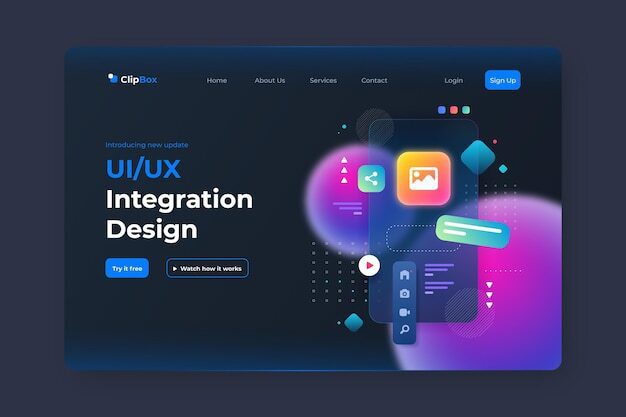UX Principles:
Creating a great website goes beyond its visual appeal and aesthetics; it is deeply rooted in the application of strong User Experience (UX) principles. UX principles play a critical role in determining the success of a website by focusing on how users interact with and perceive the site. A well-designed UX, built on foundational UX principles, can make the difference between a website that engages and delights its visitors and one that frustrates and drives them away. These UX principles ensure that every aspect of the website is crafted to meet user needs, from navigation and accessibility to design responsiveness. In this article, we will explore five essential UX principles that are indispensable for creating a truly great website.
- User-Centered Design
The foundation of a great website lies in understanding the needs, goals, and preferences of its target audience. User-centered design involves conducting user research to gain insights into the users’ behaviors, motivations, and pain points. By understanding your users, you can design an intuitive and seamless experience that meets their expectations. This principle involves creating user personas, conducting usability testing, and incorporating user feedback throughout the design process
2. Clear and Consistent Navigation
Navigation is a crucial element of a website’s UX. Visitors should be able to find what they are looking for quickly and easily. Clear and consistent navigation ensures that users can move through your website effortlessly, reducing confusion and frustration. Use intuitive labels, logical grouping of content, and easily identifiable navigation elements such as menus or breadcrumbs. A well-designed navigation system enhances the overall user experience and encourages users to explore more of your website.
3. Responsive and Mobile-Friendly Design
In today’s mobile-dominated world, it is essential to design websites that are responsive and mobile-friendly. With the increasing use of smartphones and tablets, users expect websites to adapt seamlessly to different screen sizes and resolutions. A responsive design ensures that your website looks and functions optimally across a variety of devices. It includes features like flexible layouts, scalable images, and touch-friendly interactions. By prioritizing mobile-friendliness, you can provide an excellent user experience for all visitors, regardless of the device they are using.
4. Readability and Accessibility
A great website should be accessible to everyone, including people with disabilities. Pay attention to readability and ensure that your content is easy to read and understand. Use clear typography, appropriate font sizes, and sufficient contrast between text and background. Additionally, make your website accessible by adhering to web accessibility standards and guidelines, such as providing alternative text for images and ensuring keyboard navigation. By making your website inclusive, you can reach a broader audience and enhance the user experience for all users.
5. Streamlined Conversion Process
If your website has a specific goal, such as lead generation or online sales, it is crucial to optimize the conversion process. A streamlined conversion process ensures that users can easily complete the desired action without unnecessary steps or distractions. Simplify forms, minimize the number of required fields, and provide clear calls-to-action. Additionally, provide reassurance and eliminate any potential barriers that may prevent users from taking action. By focusing on a smooth and intuitive conversion process, you can increase your website’s effectiveness and achieve your business objectives.
In conclusion, creating a truly great website requires a relentless focus on user experience (UX) and adherence to fundamental UX principles that prioritize the needs and expectations of the users. By implementing these five essential UX principles—user-centered design, clear and consistent navigation, responsive and mobile-friendly design, readability and accessibility, and a streamlined conversion process—you can craft a website that not only engages but also delights users at every touchpoint.
User-centered design lies at the heart of successful websites, ensuring that every decision is guided by a deep understanding of the target audience’s behaviors, preferences, and pain points. By placing users first, you can develop interfaces that resonate with them, addressing their needs effectively. Clear and consistent navigation is another crucial UX principle, enabling users to explore the website effortlessly and find the information they seek without confusion or frustration. Thoughtfully designed menus, intuitive layouts, and consistent labeling can make all the difference in delivering a seamless browsing experience.
In today’s digital landscape, a responsive and mobile-friendly design is no longer optional but a necessity. This UX principle ensures that your website adapts flawlessly to different screen sizes and devices, offering users a cohesive and enjoyable experience whether they’re browsing on a smartphone, tablet, or desktop. Similarly, readability and accessibility are vital UX principles that make content easily digestible for all users, including those with disabilities. Employing legible typography, adequate color contrast, and assistive technologies ensures inclusivity and enhances the overall user experience.
Lastly, a streamlined conversion process is a cornerstone UX principle for achieving business goals. By minimizing friction, simplifying forms, and guiding users toward desired actions, you can create a website that not only captivates visitors but also drives meaningful engagement and conversions. These UX principles, when combined, form the foundation of a website that is both visually appealing and purpose-driven.
Remember, a great website is not just about aesthetics; it’s about designing an experience that is intuitive, efficient, and enjoyable for every visitor. By committing to these UX principles, you can build a website that stands out, fosters loyalty, and consistently meets the evolving needs of its users.

